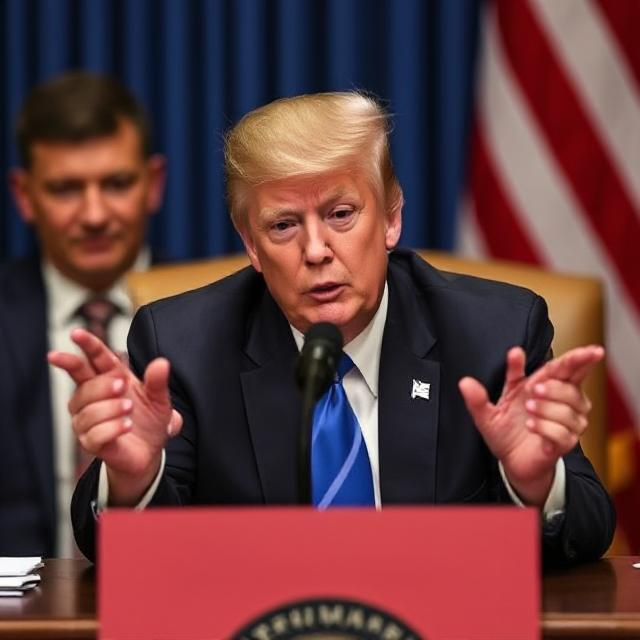
March 24, 2025 – In a bizarre twist of events, the Trump administration has found itself at the center of an unprecedented security blunder after a high-ranking official inadvertently sent a detailed outline of potential military strategies to an unsuspecting civilian via text message. The incident, first reported by The Atlantic, has raised serious questions about the administration’s handling of sensitive information and its communication protocols.
According to the report, the recipient—a 34-year-old graphic designer from Ohio named Jamie Carter—received the cryptic message late last week. The text, which appeared to come from an unlisted number, contained what seemed to be a draft of contingency plans for a military operation, complete with troop movement details, potential targets, and a timeline. Carter, who initially thought it was a prank, told The Atlantic, “I thought it was some weird spam or a friend messing with me. But then I kept reading, and it was way too specific.”
The message reportedly began with an informal greeting—“Hey, quick rundown for tomorrow’s brief”—before launching into a bullet-point list of strategic objectives, including references to “escalation protocols” and “neutralizing key assets.” While the exact nature of the plans remains unverified, Carter forwarded the text to a friend, who then alerted authorities. The FBI has since launched an investigation, and the administration has remained tight-lipped about the incident.
White House Press Secretary Lauren Daniels addressed the situation briefly during a Monday briefing, calling it “an unfortunate clerical error” and assuring the public that “no classified information was compromised.” However, experts are skeptical. “This isn’t just a ‘whoops, wrong number’ situation,” said Dr. Emily Harper, a national security analyst at Georgetown University. “If authentic, this leak suggests a shocking level of carelessness at the highest levels of government.”
The gaffe comes at a time when the Trump administration is already facing scrutiny over its foreign policy approach, particularly amid heightened tensions with several nations. Political opponents have seized on the incident as evidence of broader incompetence. “This is what happens when you run a government like a reality show,” tweeted Senator Elizabeth Warren, calling for a full congressional inquiry.
Carter, meanwhile, has been thrust into the spotlight, fielding calls from journalists and government officials alike. “I just want to go back to designing logos,” he said. “I didn’t sign up for this.” He has declined to share the full text publicly, citing concerns for his safety, though he provided screenshots to federal investigators.
As the story unfolds, questions linger about how such a mistake could occur—and what it means for national security. Was this a one-off error, or a symptom of deeper disarray? For now, the administration is scrambling to contain the fallout, while the public waits for answers. One thing is clear: in the age of instant communication, even the most powerful offices aren’t immune to a misdirected message.











